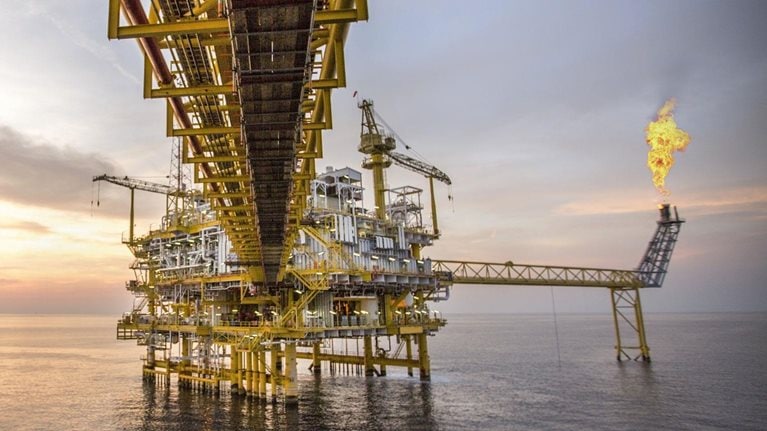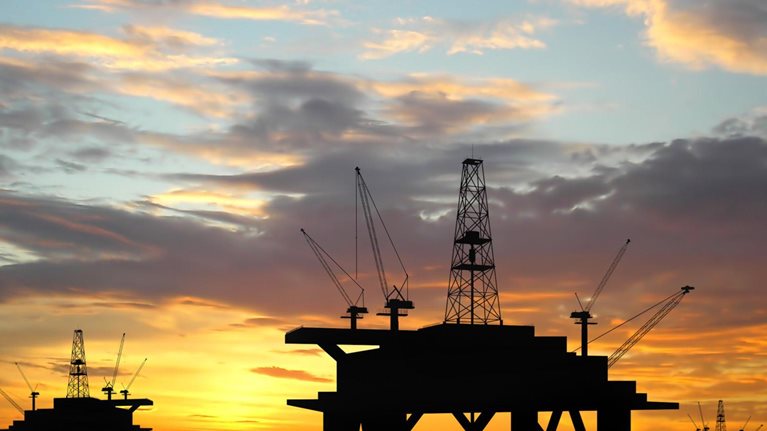In December 2016, BP approved investment for Mad Dog 2, a new oil platform in the Gulf of Mexico that is projected to produce up to 140,000 barrels of oil a day from 14 wells. It is expected to come on line in late 2021. The decision to greenlight Mad Dog 2, when the global oil price was about $50 a barrel, was an important signal for the deepwater industry. In 2013, even when oil prices were around $100, the project was postponed after development costs ballooned to $20 billion, leading some to question the role of offshore oil as a source of future supply growth.
Stay current on your favorite topics
BP and its partners, BHP Billiton and Chevron, cut the project costs to $9 billion and now it seems that, due to engineering and commercial innovations, the prospects for offshore oil could be looking up. In this interview, BP’s vice president of global projects (offshore), Starlee Sykes, discusses how Mad Dog 2 has changed how BP thinks about developing deepwater projects. She spoke with Laura Borland and Kassia Yanosek, who work in McKinsey’s Global Energy and Materials Practice.
McKinsey: What are your thoughts on the attractiveness of deepwater assets at this point in the oil-price cycle, especially compared with unconventionals?
Starlee Sykes: All deepwater is not equal. When you look across various basins, some deepwater is better than others in terms of prospectivity, fiscal terms, and the necessary infrastructure. In general, though, deepwater has a ways to go.
Looking back, we have built four big deepwater projects in the Gulf of Mexico: Mad Dog, Holstein, Thunder Horse, and Atlantis.1 These were all approved when oil was at less than $20 a barrel, with development costs that provided attractive returns. When we had the concept of Mad Dog 2, we were sitting at more than $100 a barrel. I was the vice president of our Gulf of Mexico developments at the time. It was really just a bit of a sense check to say, “There must be a better way to do this. Time out.”
McKinsey: What was the problem?
Starlee Sykes: We were chasing barrels. The focus was on volume over value. With Mad Dog 2, we were looking at a project that was barely economic at $100 oil. When my colleagues and I were preparing to take our investment case to the board, we just looked around the room and said, “Look, this doesn’t feel right. Doing the project this way is not a good idea.” So, we went back to the drawing board.
McKinsey: What changes did you make to the original plan?
Starlee Sykes: We looked for analogies to what we had done before and focused on the Atlantis project in the gulf, which came online in 2007, and its semisubmersible-platform design concept. Atlantis was, and is, viewed as a very economic, very good development. We decided to adopt this simpler design concept. Compared to the original Mad Dog 2 stacked-deck spar design, the semisubmersible is flexible for building future capacity, while fulfilling minimum technical requirements. That was the big idea around Mad Dog 2. Rather than designing for a future that may not happen, the principle was to build what we need at day one, and then allow for the expansion later. So, for example, we did not install all of the water-injection capacity that we needed on day one. It’s a more incremental approach.
Another thing we did was focus on industry-led solutions. BP had previously used the same standards globally, so that we would be consistent on things like metallurgy. But the reality is that in some global locations like the North Sea, you only have consistent access at certain times of year to paint or do maintenance because of the weather. The Gulf of Mexico is different, with a calmer climate allowing for continuous access for painting and maintenance. The standards applied should be fit for purpose. So we asked our suppliers to let us know when we had gone above and beyond what we needed to. We looked at every bit of every system to identify appropriate technical standards.
McKinsey: What was the most important single factor in making this change of direction?
Starlee Sykes: I think it was the leadership saying, “Schedule is less important than getting this right,” and then giving the team the freedom to act. That was the catalyst. If we tried to keep the original concept and just worked around the edges, we wouldn’t have gone very far.
McKinsey: Initially, the estimated investment for Mad Dog 2 was $20 billion. Under the new strategy, it is $9 billion. Where did the savings come from?
Starlee Sykes: Every element of the project has gone through a rigorous review. Roughly, I would say it’s probably two-thirds reengineering and one-third negotiating with suppliers. We originally said we would produce 90 percent of Mad Dog 2’s resources at 65 percent of the original cost, but we are now actually planning to produce 100 percent of the resources at less than 50 percent of the cost.
McKinsey: How did you negotiate with your suppliers?
Starlee Sykes: We acted as the catalyst by opening the discussions with our own ideas. Some of these were deliberately aggressive as we believed it was important to demonstrate how serious we were about working differently to bring down the cost. We asked if there was anything that we could do with them to help get the price down without compromising safety and integrity. Some of the contractors were very quick to come to the table and give us ideas that would save us both money. And there were others that essentially said, “It is what it is. Take it or leave it.” It took a while for all of them to realize this was not just our problem, that it was an industry problem, and that we needed their help.
On the floating production unit, for example, we changed our contracting strategy. We were going to sole-source the engineering, but we weren’t getting a competitive outcome. So we decided to open up the engineering. We told the fabricators to partner with whomever they wanted on the engineering side. That was a big deal.
McKinsey: How did you ensure the design met high standards for quality, health, safety, and environmental safeguards, given that you have cut your costs by more than half?
Starlee Sykes: That was really important to us, as you can imagine. For our critical engineering technical practices—anything that has to do with loss of primary containment or with the instrument and safety systems—there is no compromise. Our experts reviewed the proposals from suppliers to make sure that there was no loss in quality. But we were open to things around operability. The Mad Dog 2 field has a design life of 35 years. That doesn’t mean every washer is going to last that long. It’s OK if we change some out. So it’s a more pragmatic approach to design life, maintenance, and metallurgy.
McKinsey: Recently, there have been a number of mergers in the oil and gas supply chain. Is that a risk or opportunity for deepwater?
Starlee Sykes: I think it is both. One thing we are talking about is how to redefine our supplier relationships, and how to work with the new, more integrated service companies. There are different kinds of projects. Mad Dog 2 is big, complex, and expensive; another project may be simple. So I think there is something to be done around developing contracting strategies that support different types of projects.
McKinsey: What are the biggest risks to meeting your production and cost goals? What keeps you up at night?
Starlee Sykes: We feel pretty good about production because Mad Dog 2 is in a known reservoir. In terms of execution, I worry about the supply chain. With the oil industry in a downturn, there is plenty of capacity and everyone is cooperative. If that changes and things get tight again, what compromises will the supply chain make?

Navigating in deepwater: Greater rewards through narrower focus
McKinsey: What are the lessons for the industry?
Starlee Sykes: As a whole, the industry is becoming more collaborative. The majors are looking to learn from the independents, and vice versa. That is new. It used to be the majors were here and the independents over there. Now there is more of an attitude of “Here’s a problem. How do we work together to get a better solution?” There is also more listening to suppliers. The oil companies used to have the mentality of “We have all the history and all the knowledge. We’re going to create the perfect design, then bid it out and dictate how to build it.” That mind-set is changing. Instead, we’re saying, “Here are our technical requirements. What do you think?”
We can also work more with suppliers to reduce costs. Here’s an example. With the supplier, we looked at how many different valve diameters one of our main valve suppliers had created for us over the last 15 years or so. It was not a good story—we were using nonstandard sizes of 8.63, 9.06, 9.25, 9.31, and on and on. So we asked, “Wouldn’t the American Petroleum Institute standard bore size of 9 work for everything?” The answer is, in the vast majority of cases, it could.
This kind of thing just doesn’t come to light unless you’re looking for it. BP’s competitive advantage is in our relationships and in our ability to see the full value chain. It’s not in designing a valve. Other people can do that.
McKinsey: What is BP’s thinking about the future of deepwater development?
Starlee Sykes: For BP, Mad Dog 2 changed the way we think. In a sense, it’s how we think about all of our projects now. We are getting away from the model of “We build the biggest, most complex things in the world.” That is true. We do. We’ve built some amazing projects. Just because we can do the big projects, though, doesn’t mean that we should. So, in the Gulf of Mexico, we’re looking for smaller resource pools. It’s a matter of leveraging the infrastructure we have in place. These projects may not be as sexy, but the economics can be very competitive. We’re getting more confident that we know where we can find value, instead of thinking everything has to be designed from scratch as a brand-new widget.



